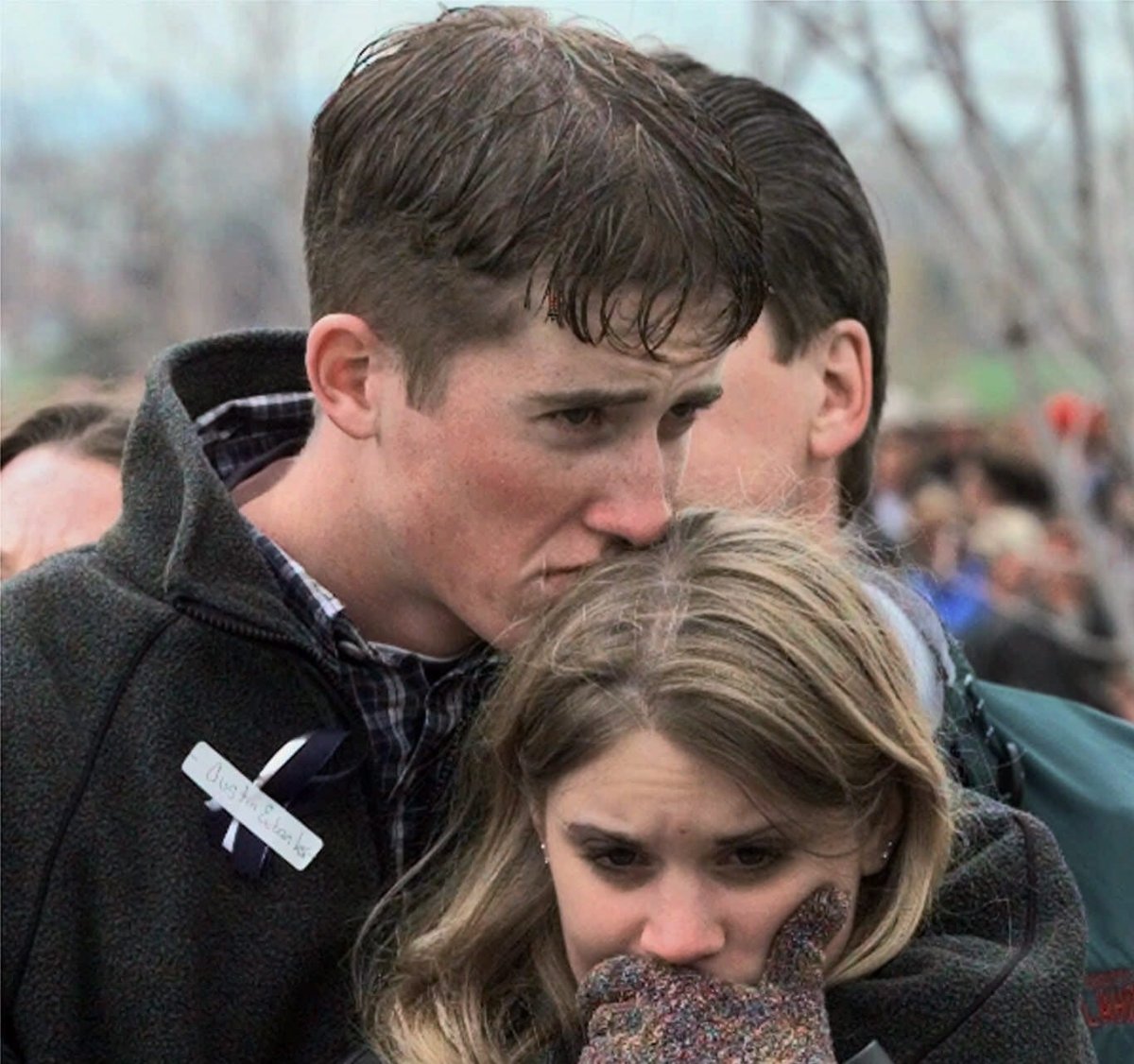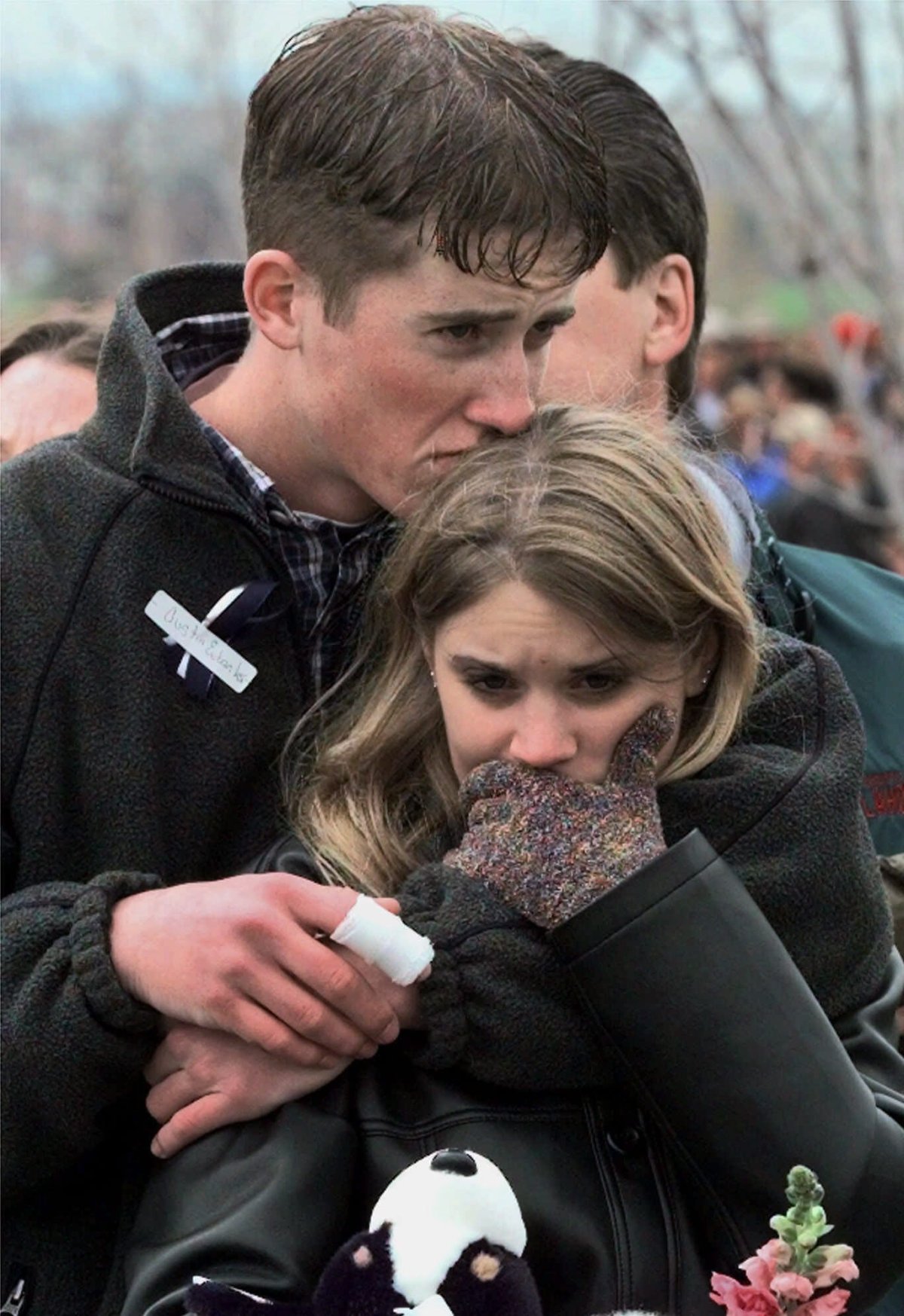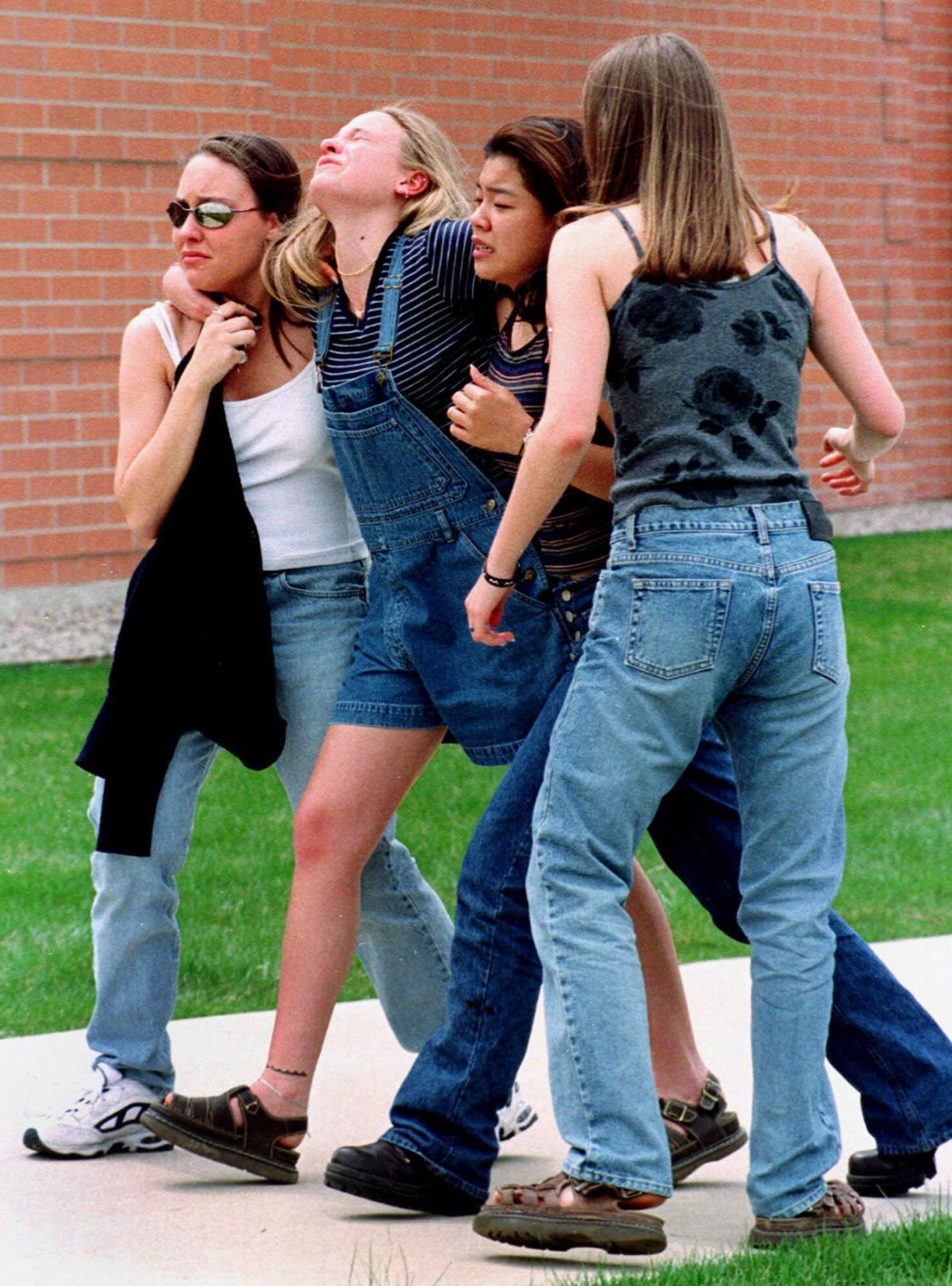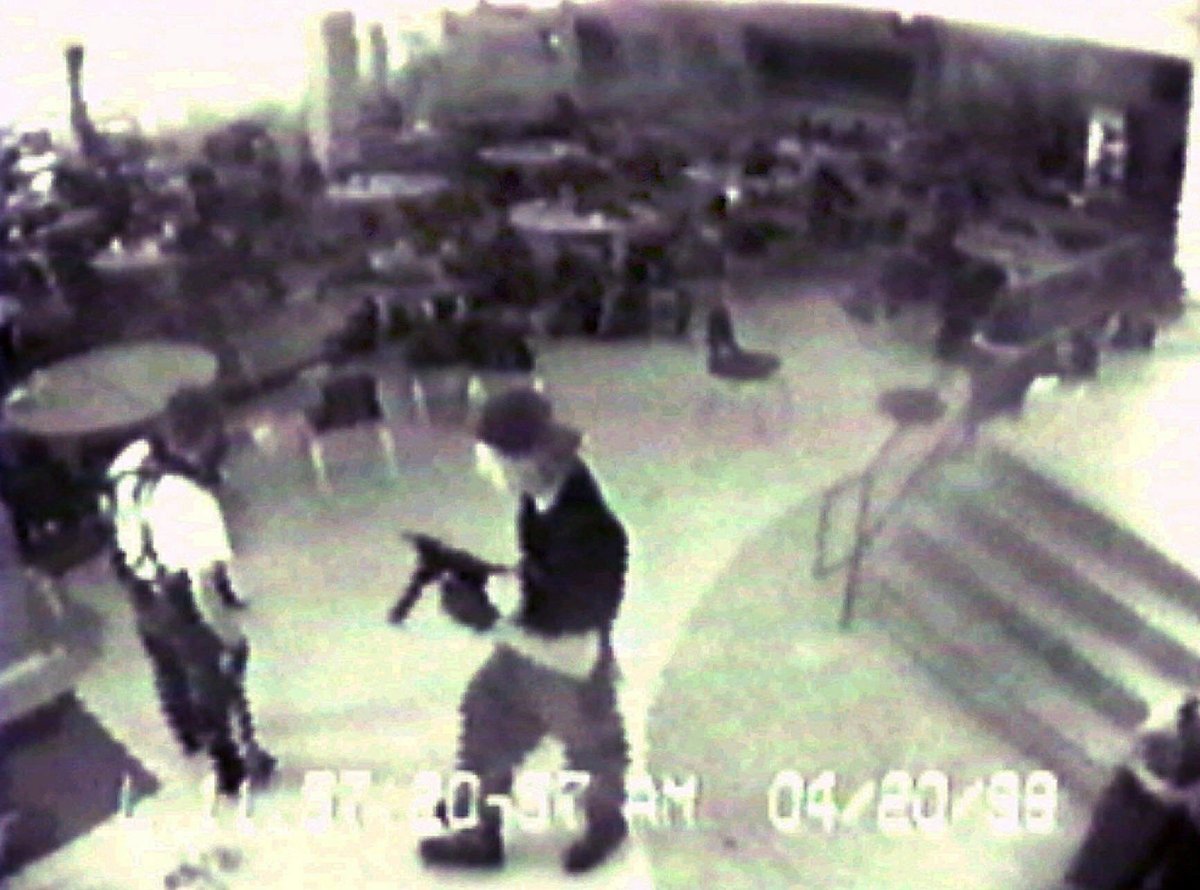All the school shootings that happen in the United States of America hit close to home for Austin Eubanks, and the one that unfolded in Florida on Wednesday afternoon, killing 17 people, was all too familiar.

“The armoured vehicles on the grass, the students running out with their hands above their heads.”
It was imagery that Eubanks experienced himself almost 20 years ago.
He was a 17-year-old student at Colorado’s Columbine High School when he and his best friend, Corey DePooter, were sitting in the library talking about going fishing after school. A teacher came running into the room, screaming at everyone to get under the tables.
What happened next is a story most people know. Two students walked into the library and began randomly shooting people.
DePooter was fatally wounded. Eubanks, shot in the knee and in the hand, crouched next to his best friend and watched him die.
Eubanks joined the 630 CHED Afternoon News on Thursday to talk about his life as a Columbine survivor and the dark path he headed down in the weeks after the shooting occurred.
Surviving Columbine
When Eubanks was a teenager, he had never touched an illegal substances or tried alcohol. After he was shot, he was prescribed opiates to deal with the pain.
“Almost immediately I was drawn to it because I was medicating the emotional pain that I was experiencing from that trauma, as opposed to medicating the physical injuries,” he said.
Within weeks he was abusing the drugs.
“I never had a big friend group in high school, but by far and away, Corey was my very best friend,” Eubanks said. “When I lost him, I lost the desire to attend school altogether. I started to hide in my addiction almost right away.”
Eubanks didn’t return to Columbine for his senior year, opting instead to utilize the private tutor that was offered to all injured survivors.
“I walked with the Class of 2000, but from that point forward, I didn’t really have any connection with anyone from Columbine.”
Mental health supports were offered, but Eubanks said the doctors all told his parents the same thing: he wasn’t engaging in grief, he was still in shock. What Eubanks now wishes they had asked was what medications he was taking at the time.
Opiod crisis and violence
After 12 years and three failed attempts at rehab, Eubanks found long-term recovery.
What he sees now is a link between the opioid crisis in the U.S. and violence in the U.S.
LISTEN BELOW: Austin Eubanks talks with the 630 CHED Afternoon News about his life after surviving the shooting at Columbine
He is advocating for funding for a group of experts that would study why shootings like this continue to happen in the U.S., and at what he calls a “dramatic rise.”
“Guns play a part, definitely. Mental health plays a part. But I want to go even below that and let’s look at the way we’re socializing young men. It’s not a coincidence that 100 per cent of these perpetrators are male, and it’s not testosterone that is making them do this.
He says the way young men are socialized needs to be examined as well as how adverse childhood experiences are coming into the equation and are playing out in the way of isolation and loneliness later in life. Eubanks says that leads to ideation about committing a crime like this.
“Only a very, very small portion of people who have a desire to commit a crime like this actually go through with it. I want to reach the people who are thinking about it.”
After the trauma
The effects of the violence can be shocking. Eubanks was giving a talk once when he was approached by a man who said he was one of the first SWAT members into the library the day of the shooting. He too is in long-term recovery.
“We both got really emotional and he said to me, ‘Of the 16 people that went into the library with me, I’m one of only two who are still alive and 10 died by overdose or suicide.’”
After a shooting like Columbine or the Parkland, Fla. shooting , Eubanks says he watches the country divide into two camps in terms of what is the cause: gun control and mental health. But nothing gets done he says.
“Everybody has their talking points that they offer, their prayers, and everybody tweets their soundbites that they want out in the public, and nothing gets done.”
His focus is what the survivors are going through.
“To the communities that are affected by these tragedies, lean on one another for support. Lean on the people who are going through the same things with you, and seek out people who have been through it before, because those are the ones who can tell you how to cope and how to move on.
“There is such a thing as post-traumatic growth and it doesn’t imply that you will ever be the same as you were before a trauma occurs, but it means that you can actually have meaningful development of personal character by overcoming the adversity that’s experienced after the trauma.”
Eubanks says he’s been asked many times whether he forgives the two teens that forever changed what the name Columbine would bring to mind. For him, the answer is simple: there are some thing in life that are “simply unforgiveable.”
“That doesn’t mean I live in this realm of hate and resentment, I don’t, but if you were to ask about forgiveness, unfortunately, in this scenario, there is none.”
Eubanks has found a career helping others who are suffering from substance abuse. He works at a recovery centre not three hours from his old high school. He doesn’t keep in touch with anyone from Columbine, but says feeling the after-effects of what happened there is really what helped him kick his drug habit and move on from the shooting.
“There is a light at the end of the tunnel. It won’t always be this darkness, but it takes time and you just have to trust the process and lean into the pain. Don’t medicate it, don’t run from it.”
Austin Eubanks is a survivor of the 1999 Columbine shooting and now is a person in long-term recovery from substance abuse and the chief operations officer for Foundry Treatment Center in Steamboat Springs, Colo.


















Comments